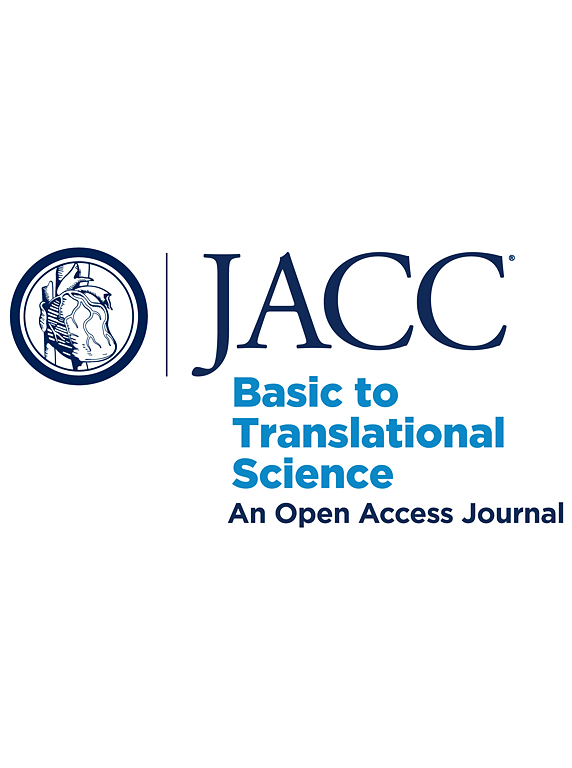Chemokine Receptor 2 Is a Theranostic Biomarker for Abdominal Aortic Aneurysms
IF 8.4
1区 医学
Q1 CARDIAC & CARDIOVASCULAR SYSTEMS
引用次数: 0
Abstract
Abdominal aortic aneurysm (AAA) is a degenerative vascular disease with a high mortality upon rupture. There is no diagnosis to predict the rupture nor effective medical therapies to prevent rupture. Here we demonstrate that the C-C chemokine receptor type 2 (CCR2) is a theranostic biomarker for AAA. In rat AAA models, we determined the potential of a CCR2-targeted positron emission tomography radiotracer [64Cu]Cu-DOTA-ECL1i predicting AAA rupture. Using a CCR2 inhibitor, we observed the effective prevention of rupture in AAA rat models. In humans, CCR2 positron emission tomography showed intense radiotracer uptake along the AAA wall in patients while little signal was observed in healthy volunteers.
趋化因子受体2是腹主动脉瘤的治疗性生物标志物。
腹主动脉瘤(AAA)是一种退行性血管疾病,破裂后死亡率很高。目前还没有预测破裂的诊断方法,也没有有效的医学治疗方法来防止破裂。本研究表明,C-C趋化因子受体2型(CCR2)是AAA的治疗性生物标志物。在大鼠AAA模型中,我们确定了CCR2靶向正电子发射断层扫描放射性示踪剂[64Cu]Cu-DOTA-ECL1i预测AAA破裂的潜力。使用CCR2抑制剂,我们观察到有效预防AAA大鼠模型破裂。在人类中,CCR2正电子发射断层扫描显示患者沿AAA壁有强烈的放射性示踪剂摄取,而在健康志愿者中观察到的信号很少。
本文章由计算机程序翻译,如有差异,请以英文原文为准。
求助全文
约1分钟内获得全文
求助全文
来源期刊

JACC: Basic to Translational Science
CARDIAC & CARDIOVASCULAR SYSTEMS-
CiteScore
14.20
自引率
1.00%
发文量
161
审稿时长
16 weeks
期刊介绍:
JACC: Basic to Translational Science is an open access journal that is part of the renowned Journal of the American College of Cardiology (JACC). It focuses on advancing the field of Translational Cardiovascular Medicine and aims to accelerate the translation of new scientific discoveries into therapies that improve outcomes for patients with or at risk for Cardiovascular Disease. The journal covers thematic areas such as pre-clinical research, clinical trials, personalized medicine, novel drugs, devices, and biologics, proteomics, genomics, and metabolomics, as well as early phase clinical trial methodology.
 求助内容:
求助内容: 应助结果提醒方式:
应助结果提醒方式:


